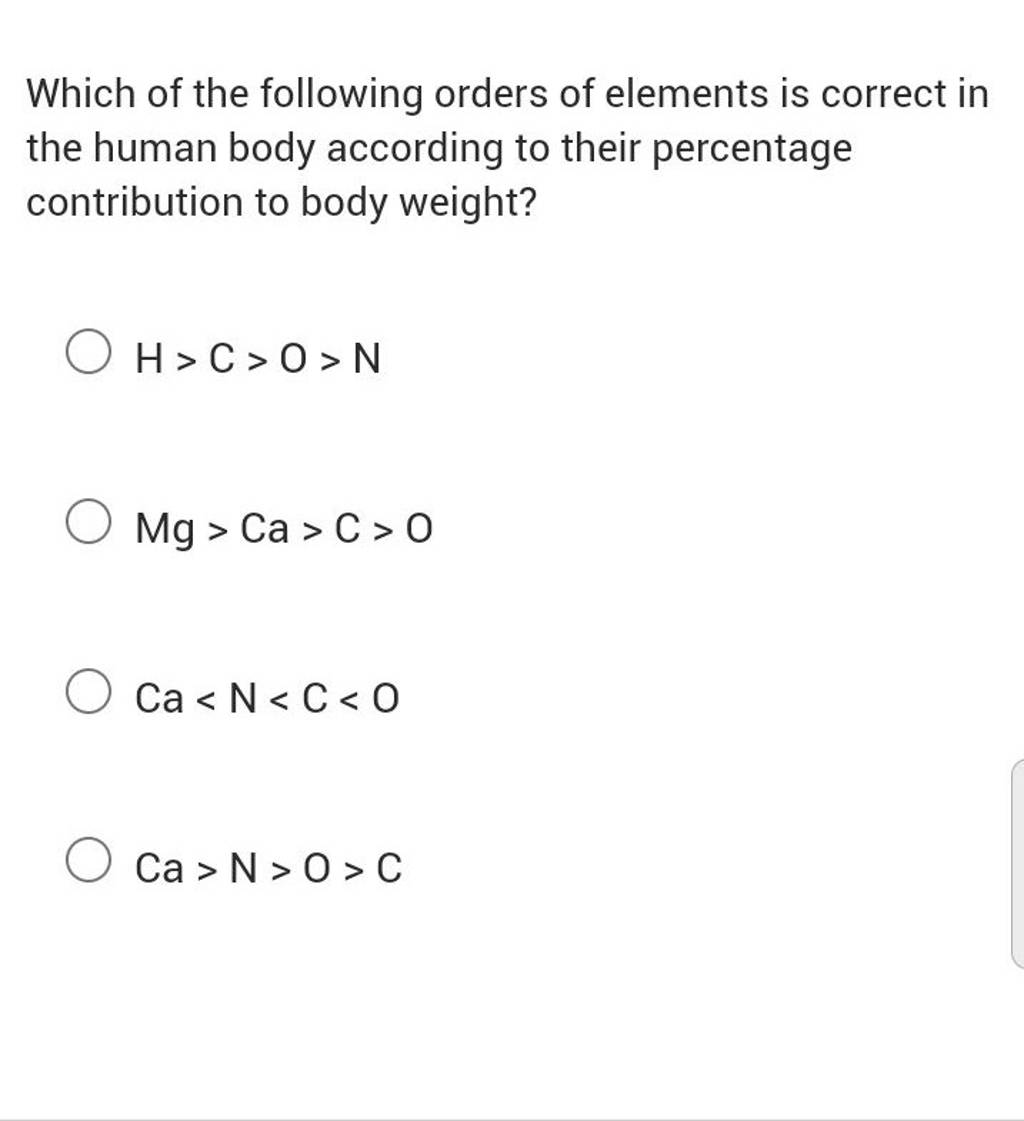Question
Question asked by Filo student
Which of the following orders of elements is correct in the human body according to their percentage contribution to body weight?

Found 2 tutors discussing this question
Discuss this question LIVE
6 mins ago

One destination to cover all your homework and assignment needs
Learn Practice Revision Succeed

Instant 1:1 help, 24x7
60, 000+ Expert tutors

Textbook solutions
Big idea maths, McGraw-Hill Education etc

Essay review
Get expert feedback on your essay

Schedule classes
High dosage tutoring from Dedicated 3 experts
Practice more questions on Human Physiology
Question 2
Hard
Views: 5,250
Mark the correct choice as :
Assertion: When the availability of the essential nutrients falls below the critical concentration deficiency symptoms appear.
Reason: Critical concentration is that limited concentration of the essential element below which growth of the plant is reduced.
Students who ask this question also asked
Question 4
Views: 5,320


Stuck on the question or explanation?
Connect with our Biology tutors online and get step by step solution of this question.
231 students are taking LIVE classes
| Question Text | Which of the following orders of elements is correct in the human body according to their percentage contribution to body weight? |
| Updated On | Oct 1, 2022 |
| Topic | Human Physiology |
| Subject | Biology |
| Class | Class 11 |
| Answer Type | Video solution: 1 |
| Upvotes | 92 |
| Avg. Video Duration | 6 min |
